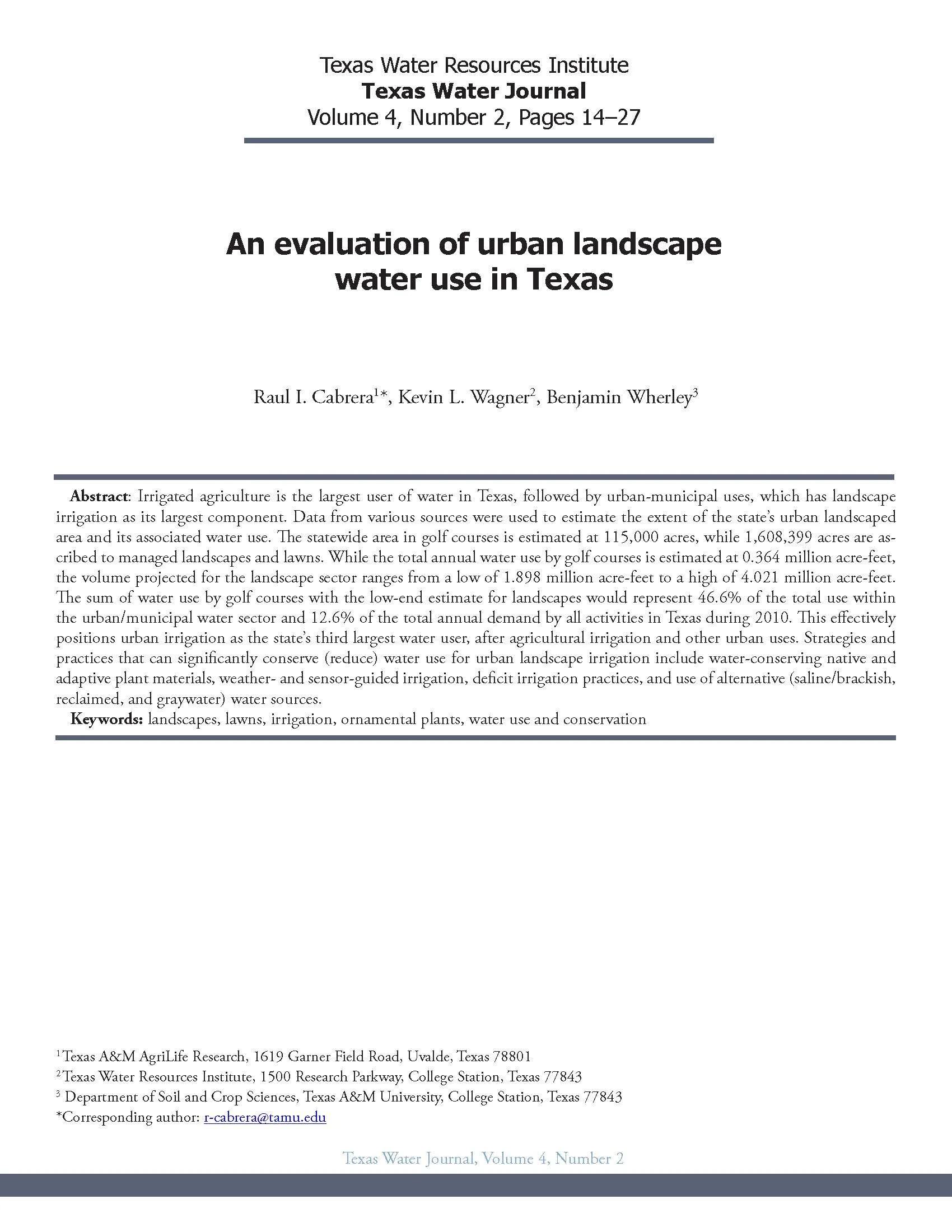This study examines the results of a random sample survey of Texans evaluating citizen awareness, attitudes, and willingness to adopt water conservation practices. The study investigates changes in public attitudes following the most intense one-year drought on record in Texas by evaluating public perception of water availability, assessing Texans’ attitudes and perceptions regarding drought conditions, and comparing the number of Texans adopting practices to conserve water before and after the drought of 2011. Almost 70% indicated that the likelihood of their area suffering from a prolonged drought was increasing. More than 61% of respondents have changed the way their yard is landscaped and 62% have also adopted new technologies in an effort to conserve water. Overall, responses indicated that Texans are concerned with water availability after experiencing, in 2011, the worst one-year drought on record, and that the majority of respondents are taking personal action in an effort to conserve water for the future
Read MoreIrrigated agriculture is the largest user of water in Texas, followed by urban-municipal uses, which has landscape irrigation as its largest component. Data from various sources were used to estimate the extent of the state’s urban landscaped area and its associated water use. The statewide area in golf courses is estimated at 115,000 acres, while 1,608,399 acres are ascribed to managed landscapes and lawns. While the total annual water use by golf courses is estimated at 0.364 million acre-feet, the volume projected for the landscape sector ranges from a low of 1.898 million acre-feet to a high of 4.021 million acre-feet. The sum of water use by golf courses with the low-end estimate for landscapes would represent 46.6% of the total use within the urban/municipal water sector and 12.6% of the total annual demand by all activities in Texas during 2010. This effectively positions urban irrigation as the state’s third largest water user, after agricultural irrigation and other urban uses. Strategies and practices that can significantly conserve (reduce) water use for urban landscape irrigation include water-conserving native and adaptive plant materials, weather- and sensor-guided irrigation, deficit irrigation practices, and use of alternative (saline/brackish, reclaimed, and graywater) water sources.
Read More

